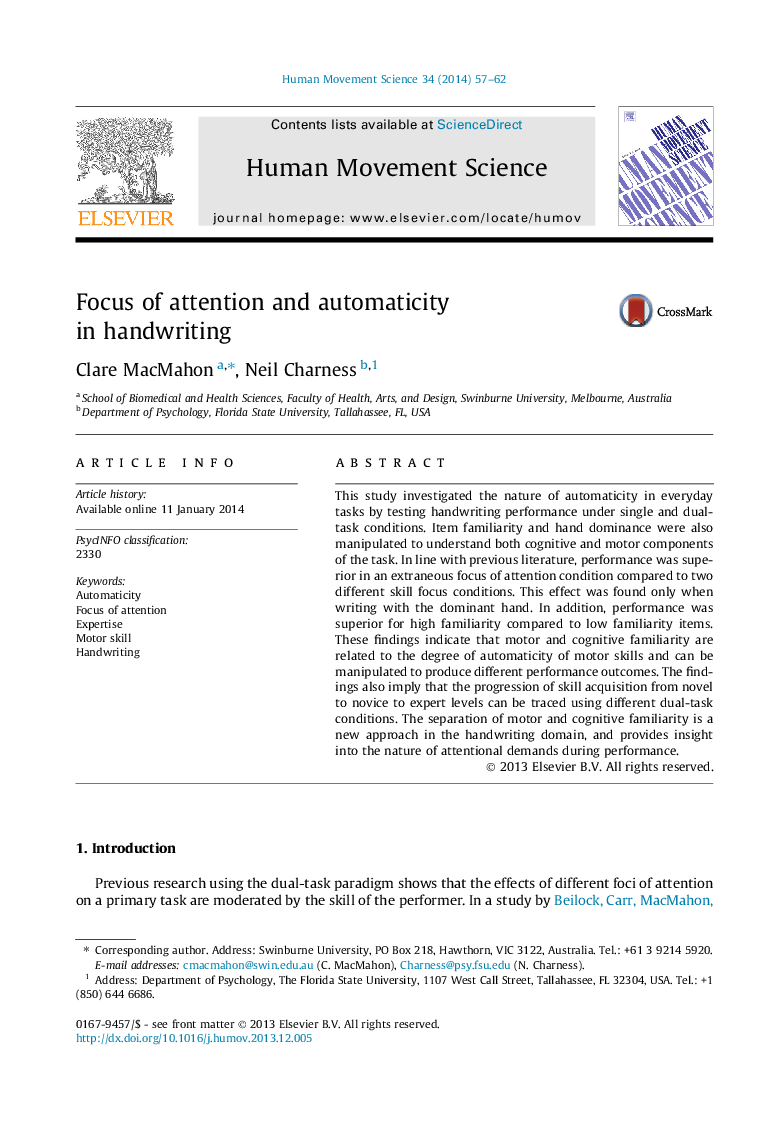| Article ID | Journal | Published Year | Pages | File Type |
|---|---|---|---|---|
| 928410 | Human Movement Science | 2014 | 6 Pages |
•Handwriting performance was investigated in both hands and for high and low familiarity items.•Performance was superior for first names than low familiarity words.•Performance in an extraneous dual-task condition was superior to skill-focused conditions.•Performance in the non-dominant hand was similar across all secondary task conditions.•Cognitive and motor familiarity manipulations influence performance under secondary task conditions within one individual.
This study investigated the nature of automaticity in everyday tasks by testing handwriting performance under single and dual-task conditions. Item familiarity and hand dominance were also manipulated to understand both cognitive and motor components of the task. In line with previous literature, performance was superior in an extraneous focus of attention condition compared to two different skill focus conditions. This effect was found only when writing with the dominant hand. In addition, performance was superior for high familiarity compared to low familiarity items. These findings indicate that motor and cognitive familiarity are related to the degree of automaticity of motor skills and can be manipulated to produce different performance outcomes. The findings also imply that the progression of skill acquisition from novel to novice to expert levels can be traced using different dual-task conditions. The separation of motor and cognitive familiarity is a new approach in the handwriting domain, and provides insight into the nature of attentional demands during performance.
